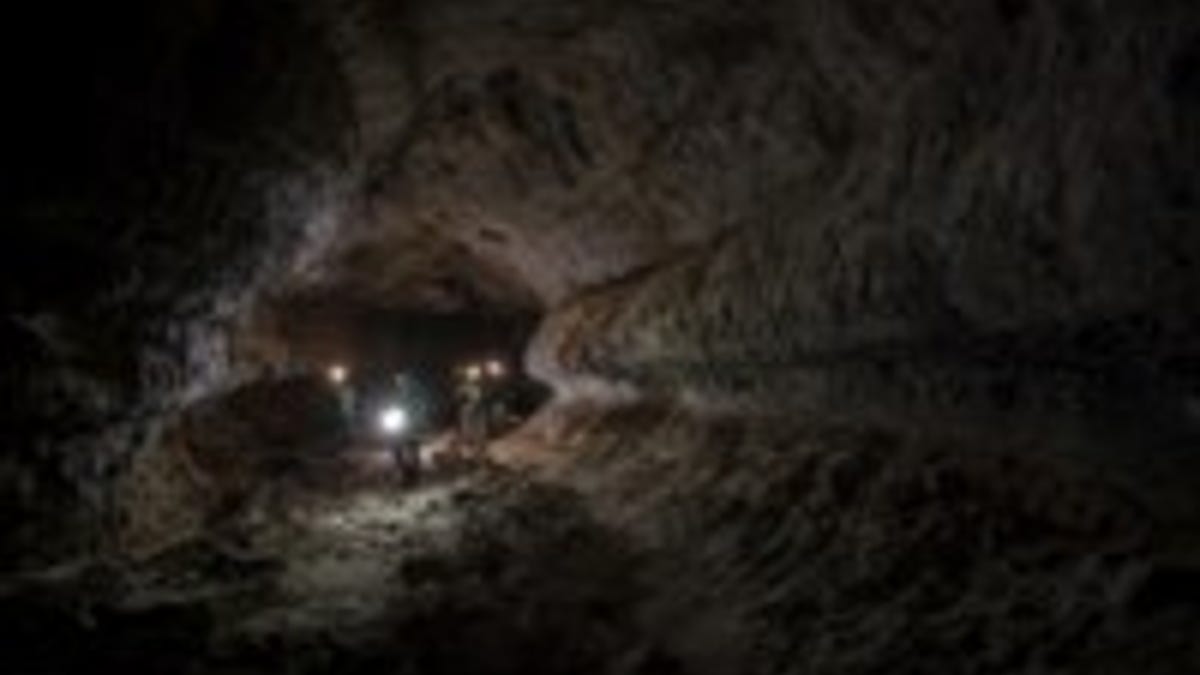Fox News Flash top headlines for August 15
Fox News Flash top headlines are here. Check out what's clicking on FoxNews.com.
Lava tubes under the surface of both the moon and Mars are large enough to be the homes of planetary bases as humanity further explores the cosmos, a newly published study suggests.
The research notes the tubes are likely between 100 and 1,000 times the size of those on Earth and can shield humans from cosmic radiation. The tubes are also likely up to 100 feet wide and upwards of 25 miles long.
"Lava tubes could provide stable shields from cosmic and solar radiation and micrometeorite impacts which are often happening on the surfaces of planetary bodies," the study's lead author, Franceso Sauro, said in a statement. "Moreover, they have great potential for providing an environment in which temperatures do not vary from day- to nighttime. Space agencies are now interested in planetary caves and lava tubes, as they represent a first step toward future explorations of the lunar surface (see also NASA's project Artemis) and toward finding life (past or present) in Mars subsurface."

(Credit: University of Bologna)
ANCIENT MARS MAY HAVE BEEN COVERED IN ICE, NOT WATER, STUDY SUGGESTS
To come up with their findings, Sauro and the other researchers looked at lava tubes in a variety of different regions on Earth: Hawaii, the Canary Islands, the Galapagos Islands, Australia and Iceland.
"We measured the size and gathered the morphology of lunar and Martian collapse chains (collapsed lava tubes), using digital terrain models (DTMs), which we obtained through satellite stereoscopic images and laser altimetry taken by interplanetary probes," study co-author, Riccardo Pozzobon, added. "We then compared these data to topographic studies about similar collapse chains on the Earth's surface and to laser scans of the inside of lava tubes in Lanzarote and the Galapagos. These data allowed to establish a restriction to the relationship between collapse chains and subsurface cavities that are still intact."
It's likely that the lower gravity on the moon and Mars impacted the early volcanic activity on them billions of years ago, which could explain why the tubes are significantly larger than those seen on Earth.
CAVE DISCOVERED ON THE MOON RAISES HOPE FOR HUMAN COLONIZATION
Given their size, the tubes on the moon could be "an extraordinary target for subsurface exploration and potential settlement in the wide protected and stable environments of lava tubes," Pozzobon added.
The study was published in the scientific journal, Earth-Science Reviews.
This is not the first time researchers have suggested underground structures on the moon as a possible home for life. In 2017, the Japan Aerospace Exploration Agency discovered an enormous cave under the lunar surface, something it described as a "very significant" discovery, due to its value for both science and human expansion into space.
NASA is making preparations for a return to the moon in 2024, via its Artemis program, the successor to the Apollo program. In April, the space agency detailed plans for putting a base on Earth's natural satellite.
Researchers continue to learn about Mars' past. A study published in March suggested the Red Planet had two unique reservoirs of ancient water that once flowed deep beneath the planet's surface.
In May, scientists discovered 4-billion-year-old organic molecules containing nitrogen in a Martian meteorite, suggesting that Mars could have been "blue" in its past, with water covering the planet's surface.
In June, researchers suggested Mars could have been a ringed planet in its ancient past, as one of its moons, Deimos, has a slightly altered orbit that suggests there was something responsible for its slight tilt.
NASA's long-term goal is to send a manned mission to Mars in the 2030s.





















